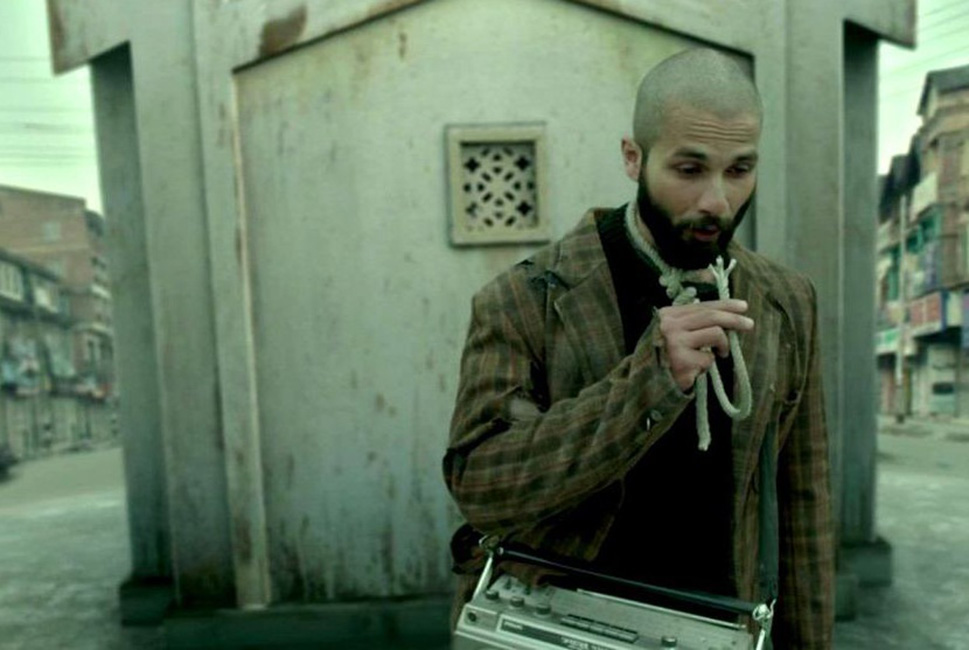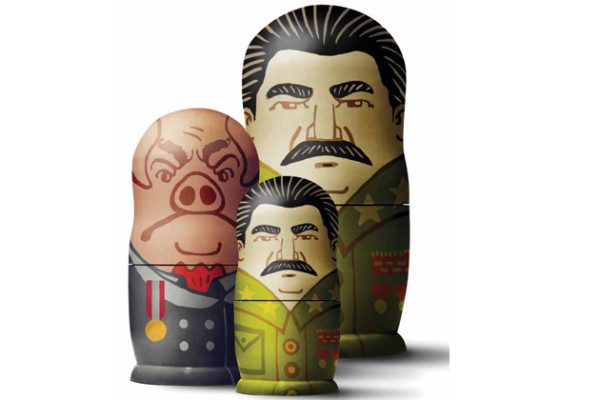Haider as a film projecting the reality of Kashmir, has coalesced multiple narratives into a simplistic choice between vengeance and peace. Deepa Bhasthi elaborates the shades of grey which often permeate into the everyday lives of Kashmiris ….
Horatio: They bleed on both sides. – How is it, my lord?
Osric: How is’t, Laertes?
Laertes: Why, as a woodcock to mine own springe, Osric; I am justly kill’d with mine own treachery.
William Shakespeare’s Hamlet Act V. Scene II
The story of revenge served cold or otherwise, has never been found to be linear. Take Arjuna. Or Hamlet. Or the legend of the snake with a rage that lasts a purported 12 long years. Or the Tamils, the Sinhalese. Or Haider. Embroiled in the act of seeking revenge are complex philosophical and ethical issues that surround the means of revenge, be it cold blooded murder, calculated vengeance or thwarted desire. There are always many shades between white and black, many more than fifty. Yet, popular culture seems to insist on conveniently bracketing revenge, emotions, conflict, into water tight boxes, with no recourse of escape, no space for alternative interpretations.
That was my problem with Haider. Admittedly, it is one of the better films to come out from the B-factory in recent times. I should have known better when everyone and their uncle recommended that this, Haider, was “true cinema.” I went for the poetry, but there was hardly any. Instead I admired the Kashmiri embroidery, on everything from the blankets to waistcoats to durries in the sun room, and wished the film was half an hour shorter. The movie was not only very far from “true cinema”, whatever that definition stand for, but it also tried to reduce the Kashmir issue, and the larger question of vindication and vengeance to a simple, straightforward answer. It can never be simple; human beings are much more complicated than that.
Coincidentally, it so happened that I was midway through Samanth Subramanian’s fantastic book This Divided Island – Stories from the Sri Lankan War when I went to watch Haider. Both presented an interesting juxtaposition to the issue of revenge, seeking it, being at its receiving end or fated to be a mute witness. Subramanian, a New Delhi based journalist, moved to Sri Lanka for nearly a year, travelled extensively and gathered the multiple narratives of post-war Sri Lanka. He is Tamil, so that places him on a precarious ledge. But like a true journalist, he is only the carrier of stories, the messenger who refuses, who cannot take sides.
The island has not left anyone unaffected by the decades old war that ended in a purge five years ago. How could it? Not even if you were an ostrich in the sand, could something of that gravity pass you by without leaving a dent. The Tamil side was massacred, youth were, in later years, forced to pick up arms – why does a poet pick up arms? Why did Haider? Sometimes there is no choice, most times actually. Conditioned by a lifetime of an ideology, a single incident, or a slow brewing that sparks off something that is hidden in all of us, that is the philosophy we need to examine.
What is it that they say, about a little of the Satan in all of us? The Sinhalese were victims too in the tear drop country. Journalists disappeared, families were ripped apart. The monks, saffron-robed and a picture of tranquility and peace, broke down mosques, and militantly continue to encroach and build upon Tamil temples, Subramanian writes. It shouldn’t have shocked me, but it did. Religion has always blackmailed its devout to bring out the devil in them. Buddhism can’t be any different. Yet all you see in popular culture is the calmness of a monk under a Bodhi tree, meditating for world peace. That is what manufactured consent does to you, taking away what your common sense knows to impose what someone somewhere with an agenda wants you to believe. Perhaps nothing gave me a jolt as reading passages of what the religious majority has been doing to the religious minority in that country. It shouldn’t have, I almost feel foolish for being complicit with the manufactured mass opinion, but then, there is that devil in all of us.
Haider is complicit too, in feeding into and perpetrating the mass opinion of what Kashmiriyat is, reducing it to just its issue of nationalism. It is a lot more than that. But Kashmir is also about every day concerns of people – of grappling with love, loss, money, success, career, modernity, effects of globalisation and the other mundane things that concern people everywhere, elsewhere. By completely ignoring the everyday experiences of people in any non-normal conflict zone, we, as consumers of popular culture that does so, are in danger of forcing these people back into a narrow narrative, further reducing what their individual lives mean beyond cold statistics.
The greyish tone of any country’s political situation is best understood in its individual case studies, those in turn facilitating wider interpretations of the whole picture. No one in a war can be wholly right, no one can be wholly wrong either. As long as those of us who have the luxury of living along unbombed roads and at a safe distance from conflict remember that there are always two sides to an issue, somewhere, the clinical, calculated, manipulative manufacturing of consent will be unsuccessful.
J., my Kashmiri friend, is one of those cool dudes, deliciously handsome, like most Kashmiri men are. It wasn’t until sometime into our acquaintance that I got to know he was from Ananthnag, one of the most heavily affected areas in the post 1989 years. J and I never spoke of it, though the journalist in me itches to hear his story. For me, he is a happy-go-lucky sort, filmy in the way he breaks into a Bollywood inspired dialogue, tehezeeb-ed and utterly chivalrous in an old world way. He must have demons too, and a cause for revenge. The last time I spoke to him, he was on the lookout for a girlfriend. He, like his counterparts in all the countries of the world, at war or otherwise, is a sum of all these parts of his, no part greater than the whole.
Vindication, vengeance and its synonyms are only available in shades of grey.


